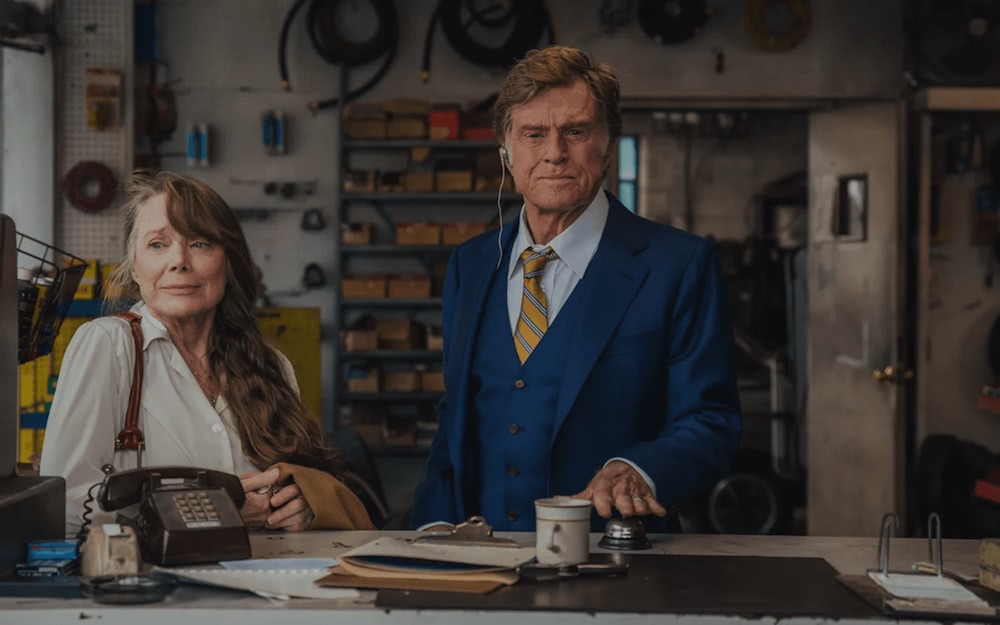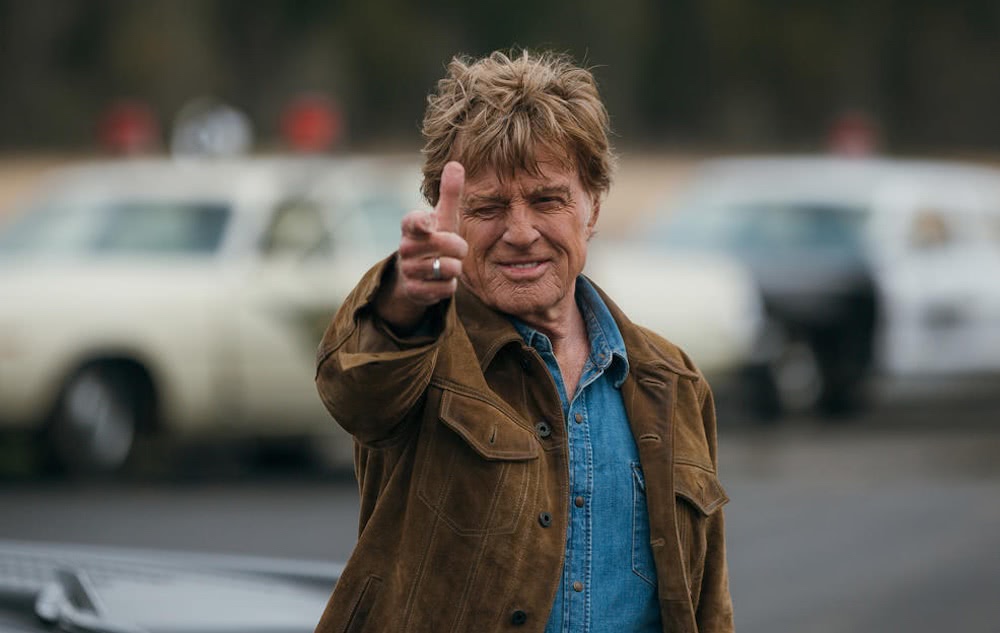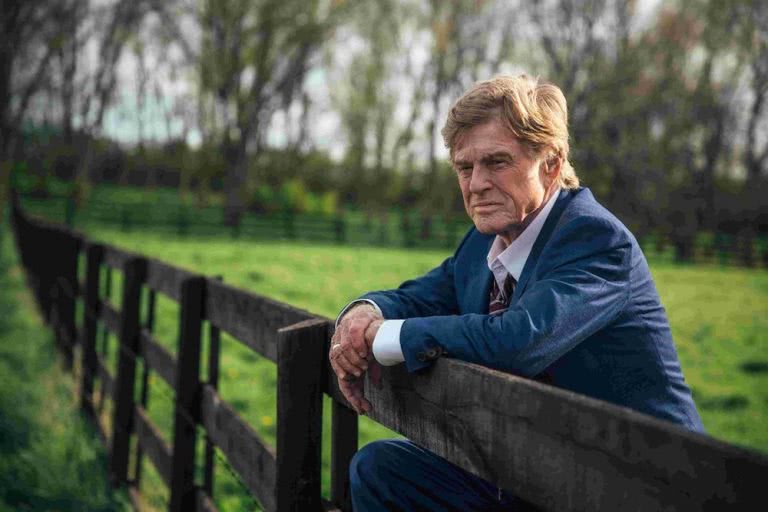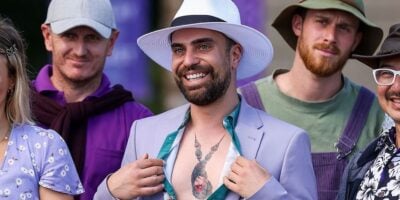After his critically-acclaimed 2013 Texas crime drama Ain’t Them Bodies Saints, his fantasist kids film Pete’s Dragon, and last year’s mesmerising meditation on time and grief A Ghost Story, American director David Lowery once again switches gears with the Robert Redford-starring The Old Man & The Gun.
In what Redford has since declared to be his last role, this 1970s-set cop-and-robber film is as much a modern play with the tropes of that genre as it is a tribute to – and a study of – Redford’s star persona. We talked with Lowery about his understanding of Redford’s iconicity, and how his subconscious seems to always drive him to explore existential questions, whatever genre he works in.
Watch the trailer for The Old Man & The Gun below
The BRAG: What was it particularly about this script that you found interesting?
David Lowery: It was really the fact that it was gonna be a Robert Redford movie. They sent me the New Yorker article that the movie is based on, and asked me if I’d be interested in writing and directing it, for him to star in. It wasn’t really the fact that it was about this character or the crazy true story, although the bank robbery sounded exciting. It was that I would get to make a quintessential Robert Redford movie!
What do you think makes it so quintessentially a Robert Redford film?
David Lowery: I think Robert Redford has essentially spent his entire career cultivating the image of an outlaw, even though he hasn’t played a bunch of outlaws. He certainly made his name, you know, as Butch Cassidy, playing a criminal, and this was an opportunity for him to put on those shoes once again.
I find that the character of Tucker in a way makes me think a lot of your previous film A Ghost Story…
David Lowery: Oh really?
Yeah, because it’s all about time again!
David Lowery: It’s true! [Laughs.] I mean, it’s true! I’m glad, I’m glad!
Because Tucker, by repeating always the same actions, continuing to be a bank robber into his old age, is kind of trying to fight time, I suppose?
David Lowery: You’re onto something there! It comforts me to know that I’m maintaining the same, you know… narrative turn. I was so worried that this movie would be so different that it would alienate people, but that there’s parallels with my previous film, that makes me happy.

I think Robert Redford has essentially spent his entire career cultivating the image of an outlaw.
I don’t know how aware you are of it, but there are so many other details as well, such as the signature on the wall, that is very much reminiscent of the notes in the walls in A Ghost Story. Can you talk a bit about that?
David Lowery: I definitely realised that while editing the movie, but to be honest, it was when we were scouting for locations, we were looking at all these houses and we found one that had a signature on the wall. I just thought that was so perfect that I wrote it into the script and only after the fact did I realise, ‘you know what? That’s exactly like A Ghost Story!’ [Laughs.]
That’s so lucky!
David Lowery: It’s one of the things… You find those things because you’re looking for them. Because I’m making the movie, I’ll see that they are right when I’m writing, even though I’m not consciously aware of how those things connect to what I’ve done in the past. But there’s meaning in the film, so of course, if I see something like that, I’ll get excited about it and use it.
Yeah, it’s like your subconscious working.
David Lowery: Completely. I have a lot of faith in my subconscious at this point.
It’s interesting how there’s a classic robber-cop dynamic between Tucker and the Casey Affleck character, John Hunt, but there’s a new dimension there because of the fact that Hunt is so depressed at first, whereas Tucker is really happy.
There’s this really strange, but, I think, really heartbreaking moment when Hunt is talking to a witness of one of Tucker’s robberies and the person keeps saying, ‘Yeah, he was just happy’ and it’s really weird to see Hunt looking miserable but just repeating the word ‘happy’.
David Lowery: Yes, exactly!
Can you talk a bit about that contrast between them?
David Lowery: One of the things that was important to me with this movie was that John Hunt, Casey’s character, doesn’t catch Forrest Tucker. In real life, he never caught him, but he also never met him.
I had written that scene where they meet each other because I felt that you need to have a scene like that – you need to have a scene where the cop and the robber meet, it’s a classic trope of the genre – but I didn’t want Hunt to catch Tucker, I wanted him to let Tucker go, and I had to figure out a way to get him to a place where that felt like the right choice.
It took me a while to figure it out but ultimately, I realised, he needs to fall in love with Forrest Tucker: there needs to be a romance there! And the best way for that to happen is for him to be brought to life by the pursuit of this guy – he needs to be in a place in life where he’s so unhappy, that when he’s given the opportunity to pursue this guy, it ignites something within himself. And that ignition is not a drive to capture him, but a drive to find out what makes him happy.
So Hunt the character, in many ways, represents me writing the film, falling in love with Forrest Tucker the character, and not wanting to catch him! [Laughs.] Not wanting to put him behind bars! It meant then to go back to the beginning of the character’s arc, and to make him have a midlife crisis.
Hunt is much younger than Forrest Tucker: he’s turning 40 when the film begins and he feels like an old man, and his life is illuminated by this old man who acts like a 15 year old boy! And that dynamic was really helpful when I was writing those two parallel stories.
It seems that their happiness is linked to having a purpose or a cause, but at the same time Tucker doesn’t really have a purpose. I think that, again, like A Ghost Story, this film becomes about so much more than just robbing banks. It’s about, ‘What are you doing with your life?’
David Lowery: Definitely.
That’s why I love the scene where they meet and Tucker tells Hunt to look sharp because then he looks like he knows what he’s doing: that’s such an interesting way of showing that Tucker is actually also in a crisis and doesn’t really know what he’s doing.
David Lowery: I really wanted it to be about more than just bank robbers. I really am not that interested in robbing banks; I’m interested in people who are living their life doing things that make them feel alive and make them feel like they’re making the right choices in life. And vice versa!
You know, the tragic side of this is somebody not doing that, and that’s interesting too, but the actual thing that they’re doing, whether robbing a bank or being a detective catching a criminal, I’m not that interested in. I’m not someone who’s totally fascinated by true crime, and so finding those other aspects to use the true story to illuminate something about human nature was far more important to me.
It’s interesting you say that, because I feel like the character of Tucker himself is kind of just the ‘image’ of a bank robber: he’s not doing much of what is usually associated with robbing banks, he’s not violent, he’s just showing up and taking money, and he’s become this kind of mythical figure. Casting Redford in that role is great because just his face signifies everything: you don’t need to even have the actual activity of robbing!
David Lowery: Yes, completely, I know exactly what you mean. I think the real Forrest Tucker wanted to be Robert Redford! [Laughs.] He didn’t really want to be a bank robber, he wanted to be Robert Redford playing a bank robber! And there’s something so…
You know, the fact that he never did it for the money, he never did it for the actual need of shooting or robbing banks, he did it for some other, ineffable reason, maybe it was the thrill, maybe he just enjoyed the rush of it… but I think, more than that, he wanted to be an archetype. He wanted to be an archetype of an outlaw, and that’s something that Robert Redford is.
Robert Redford, he’s never robbed a bank, as far as I know, but he represents the archetype of the outlaw through and through, and I think that’s what Forrest Tucker wanted to be.
My favourite moment in the film is when there’s that footage of Redford when he was younger, from The Chase, and again, not to go on about this, but I think that’s a clear connection to A Ghost Story and how it shows time passing in a very clear way. When I saw his face there, so young, I immediately burst into tears. I wanted to know what you thought about when using that technique to show him through time?
David Lowery: I had a very emotional response to it the first time I saw it too. Prior to putting that clip in there, it was just a fun sequence, a really fun and rollicking series of different images. It gave information about the character, but it wasn’t very emotional, and the thing I missed about it was seeing his face.
We had a lot of stunt doubles, younger actors, but we never showed his face. I really wanted to make sure that the audience were aware that Robert Redford was Forrest Tucker, so on a very pragmatic level, I just thought it would be useful to put him in there.
So then we did that, we edited it in, and the first time I watched it I was overwhelmed by how moving it was. Because suddenly, we are seeing the breadth not just of this character’s life, but of this actor’s life too!
We are seeing the breadth of Robert Redford’s life and suddenly, indeed, it becomes all about time, and our perception of time, and how fleeting time is. All of that is wrapped up in our understanding of who Robert Redford is as a cultural icon and an actor.
It’s immensely moving, and I haven’t quite wrapped my head around it yet. But it’s something that I can’t imagine the movie without now.

In a way, it’s what cinema is, just capturing things and keeping them forever… I think your films keep doing that a lot.
David Lowery: I’m sure that the next movie I make will do a similar thing just accidentally, and my subconscious will keep doing what it does!
Can we talk about the style you chose? It feels very late 1960s-1970s, with all the camera pans and the zoom-ins… How did you decide to use this style? Was it just to pay homage?
David Lowery: I think it was mostly to pay homage. I definitely wanted this to feel like a classic Robert Redford movie, so I was looking at the films that he made in the ’60s and early ’70s and trying to, you know, have the touchstone. But I didn’t want to romanticize it, I didn’t want this to be poetic in its approach to nostalgia. I didn’t want it to be overly deferential, so we really tried to follow the stakes.
When we had the opportunity to shoot outside in the middle of the day, when the light was the worst, we would take it because, if you’re making a little independent film in the 1970s, you don’t have much time and money to do the shot, you shoot whatever you have time to shoot. We tried to keep that approach to the film: we didn’t try to turn it into an Instagram version of the period.
We really wanted it to feel like a movie that was made, without much time or money, back in 1978, or ’68, or whatever year you want it. But more than a lot of the fun touchstones – the zooms, the camera pans, even the font that we used – more than anything else, it’s the fact that the film was shot on 16mm.
You don’t see that that much anymore – most of the movies being made today are shot on 35mm film, or if it’s Chris Nolan, he’s shooting on 70mm and it’s all about clarity, and depth, and resolution.
We decided to be anti-resolution. We shot on 16mm, then we cropped it to 2:35:1, so then there was as little resolution on screen as possible. So much of the beauty is that. So much of the DNA of the movie, the tone of the movie, is through that particular aesthetic choice.

































